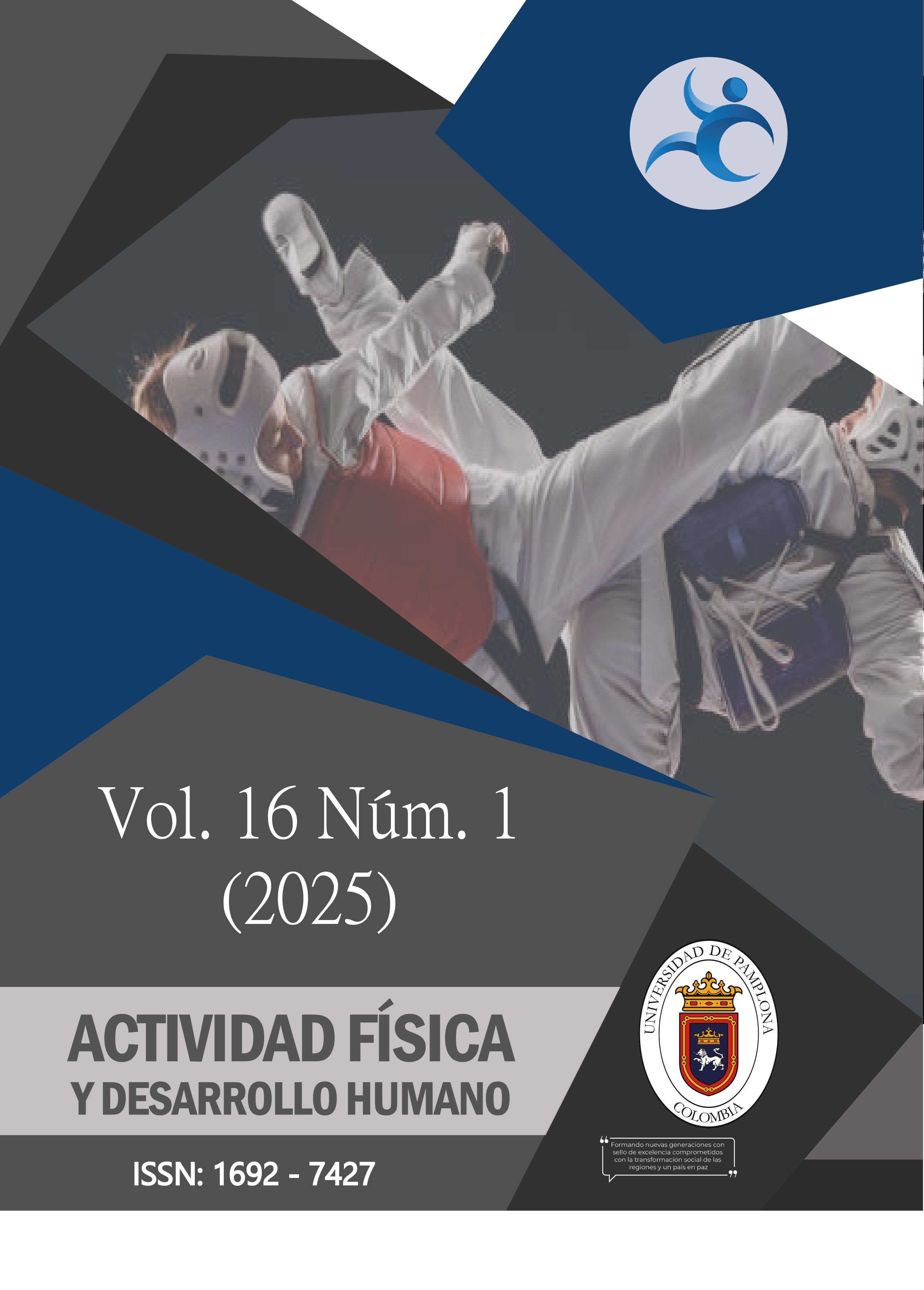Body composition and socioeconomic level of students at the Universidad Industrial de Santander
DOI:
https://doi.org/10.24054/afdh.v16i1.4084Keywords:
Bioelectrical impedance, muscle mass, fat percentage, young peopleAbstract
Body composition (BC) is influenced by endogenous and exogenous factors. The importance of an adequate BC for physical and mental health care has been reported in previous studies. In Colombia, socioeconomic level is associated with the characteristics of residential properties that receive public services; however, socioeconomic level conditions several aspects of life, including BC. Objective: To determine the relationship between BC and the socioeconomic level of students of the Universidad Industrial de Santander. Methodology: A quantitative, cross-sectional and correlational study was carried out. The participants were students over 18 years of age who answered the study questionnaire and were measured to determine height, body weight, BC, waist and hip circumference. Descriptive statistical analysis and correlations of the data were performed in SPSS software. Results: 209 students were analyzed (age 20.1 ± 2.6 years; weight 64.3 ± 11.1 kg; height 168.7 ± 8.7 cm; BMI 22.6 ± 3.4 kg/m²); 18 variables describing body components (muscle mass, fat percentage, bone mass, water percentage, among others) were analyzed. Conclusion: The socioeconomic level of the UIS students evaluated was not correlated with any of the BC variables. This study provides valuable information about the BC of UIS students, which contributes to the design of strategies to promote the health care of university students.
Downloads
References
Atencio-Osorio, M. A., Carrillo-Arango, H. A., & Ramírez-Vélez, R. (2022). Association between physical fitness and depressive symptoms in university students: a cross-sectional analysis. Nutricion Hospitalaria, 39(6), 1369 – 1377. https://doi.org/10.20960/nh.04337
Bonilla, D. A., Sánchez-Rojas, I. A., Mendoza-Romero, D., Moreno, Y., Koí, J., Gómez-Miranda, L. M., Rojas-Valverde, D., Petro, J. L., & Kreider, R. B. (2023). Profiling Physical Fitness of Physical Education Majors Using Unsupervised Machine Learning. International Journal of Environmental Research and Public Health, 20(1). https://doi.org/10.3390/ijerph20010146
Contreras Jauregui, F. A., Ramírez Serna, Y. A., & Martínez Movilla, D. J. (2024). Análisis de la composición corporal y somatotipo en estudiantes universitarios. ACTIVIDAD FÍSICA Y DESARROLLO HUMANO, 15(1), 42–57. https://doi.org/10.24054/afdh.v15i1.3135
Podstawski, R., Markowski, P., Choszcz, D., Boraczynski, M., & Gronek, P. (2020). Socioeconomic Determinants of the Anthropometric Characteristics and Motor Abilities of Polish Male University Students: A Cross-Sectional Study Conducted in 2000-2018. International Journal of Environmental Research and Public Health, 17(4). https://doi.org/10.3390/ijerph17041300
Podstawski, R., & Marzec, A. (2021). Relationships between socioeconomic factors versus the anthropometric and motor characteristics of Polish female university students (2000-2018). Physical Activity Review, 9(1), 117–127. https://doi.org/10.16926/par.2021.09.14
Ramírez-Vélez, R., Correa-Rodríguez, M., Izquierdo, M., Schmidt-Riovalle, J., & González-Jiménez, E. (2019). Muscle fitness to visceral fat ratio, metabolic syndrome and ideal cardiovascular health metrics. Nutrients, 11(1). https://doi.org/10.3390/nu11010024
Downloads
Published
How to Cite
Issue
Section
License
Copyright (c) 2025 Jorge Enrique Buitrago Espitia, Lianell Jova Elejalde, Fabio Andelfo Villafrades González

This work is licensed under a Creative Commons Attribution-NonCommercial-NoDerivatives 4.0 International License.











